Most hikers complete their adventures during comfortable midday hours, missing the golden magic that transforms familiar landscapes into something extraordinary when the sun begins its daily descent toward the horizon. National parks across America offer trails specifically designed to showcase sunset spectacles, where timing becomes as crucial as the destination in creating unforgettable wilderness experiences.
These carefully selected routes provide optimal viewing positions during those precious minutes when ordinary rock formations, desert vistas, and mountain peaks become canvases painted in colors that exist nowhere else in nature. Here is a list of 17 sunset hiking trails in US National Parks that turn evening hikes into encounters with some of America’s most spectacular natural light shows.
Delicate Arch Trail, Arches National Park
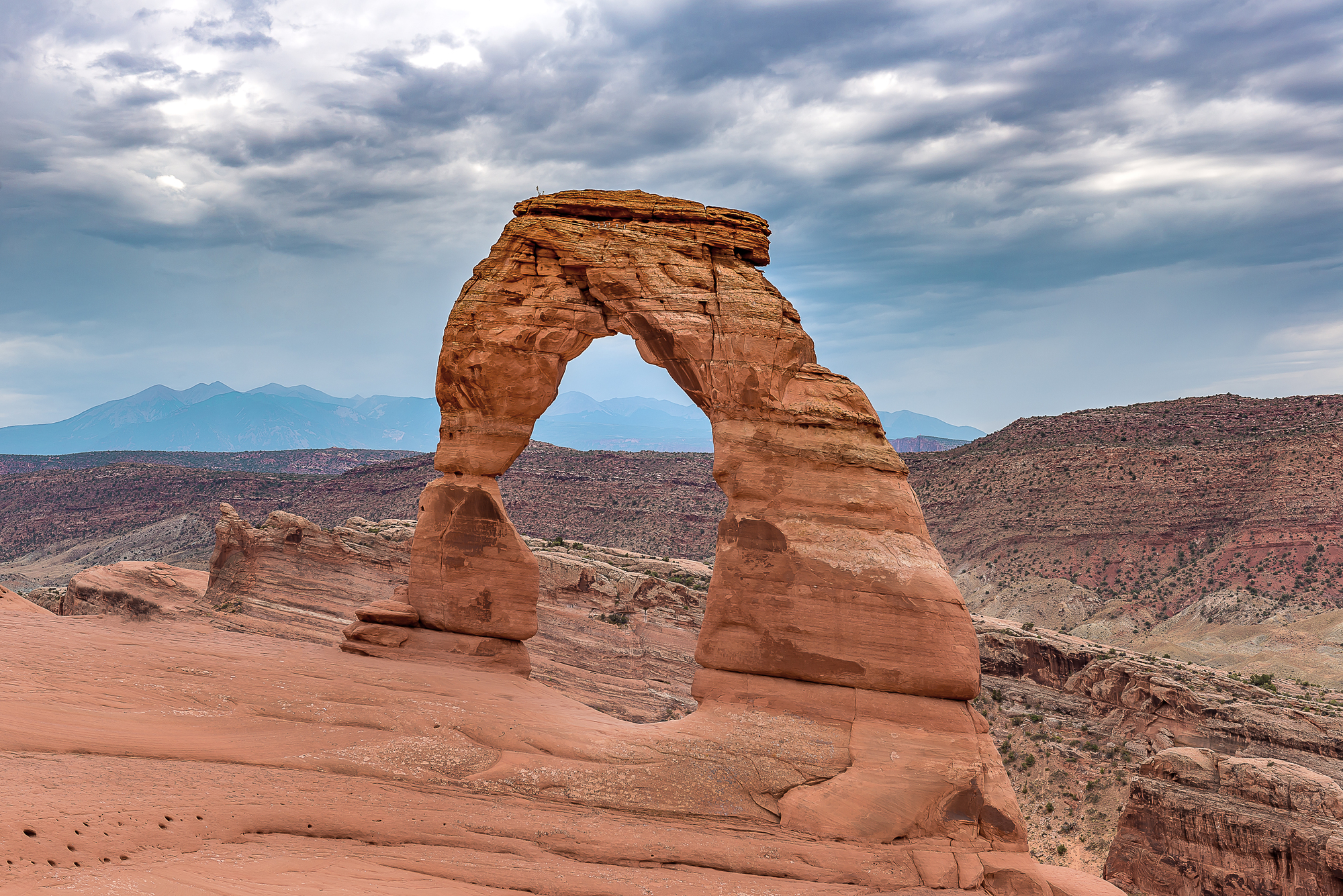
This iconic 3-mile round-trip hike leads to Utah’s most photographed natural arch, where red sandstone glows intensely during the hour before sunset as warm light filters through the 65-foot-tall opening. The trail crosses slickrock formations that require careful footing but offer unobstructed views of the surrounding desert landscape as shadows lengthen across red rock formations.
Evening light transforms the arch from a simple geological curiosity into a natural picture frame that captures the essence of the American Southwest, while cooler temperatures make the moderate climb more comfortable than midday attempts.
Cadillac Mountain Summit Loop, Acadia National Park
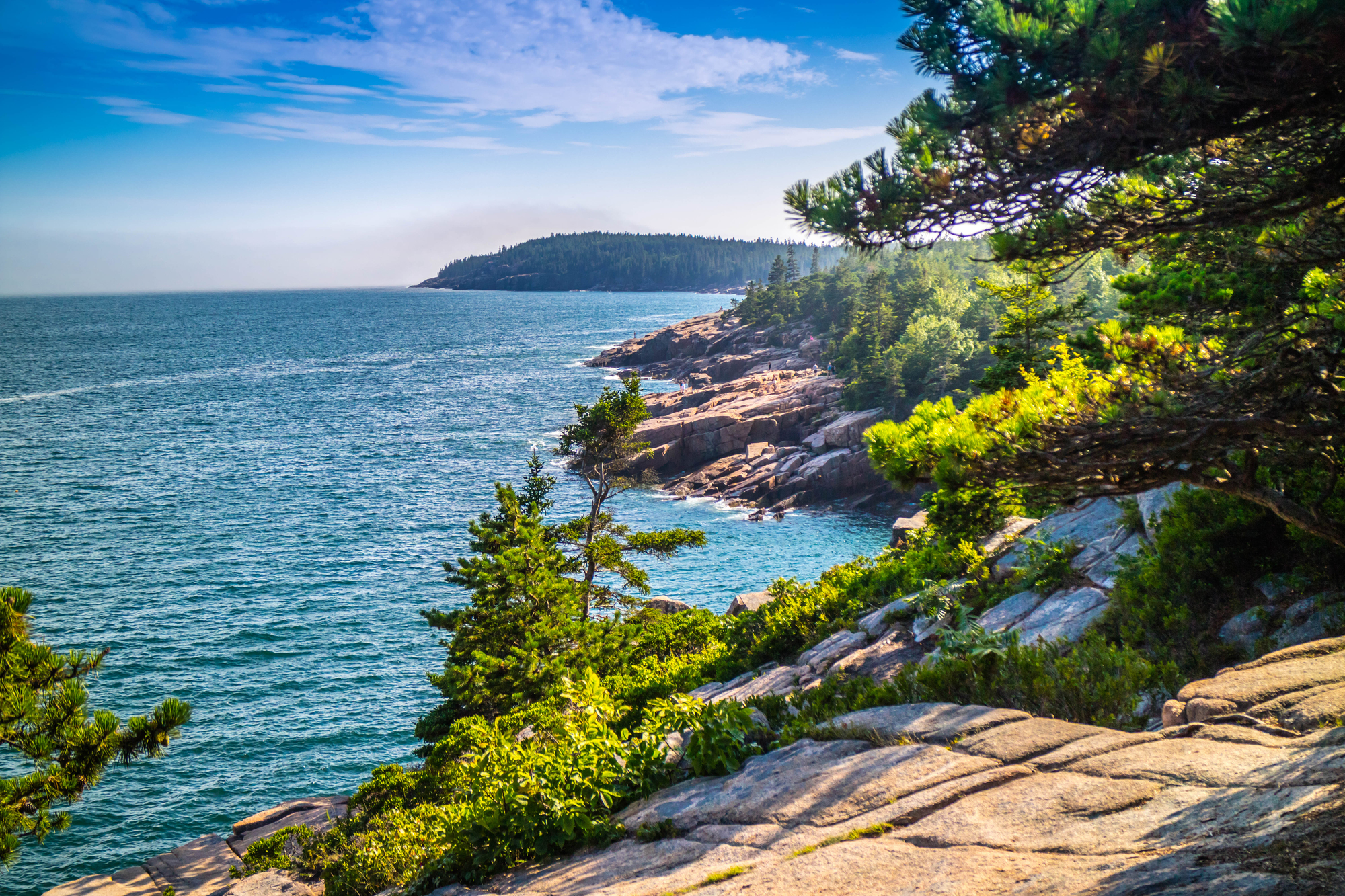
The highest point on the Eastern Seaboard provides 360-degree views of Frenchman Bay, Bar Harbor, and the Atlantic Ocean, where sunset creates silhouettes of Maine’s coastal islands against blazing skies. This easy 0.3-mile paved loop accommodates visitors of all abilities while the summit’s granite dome offers multiple vantage points for photographing the sun’s descent over Penobscot Bay.
The drive to the trailhead eliminates elevation gain, making this one of America’s most accessible sunset viewing experiences, though crowds gather here precisely because of that accessibility.
Like Travel Pug’s content? Follow us on MSN.
Angels Landing Trail, Zion National Park

This challenging 5.4-mile round-trip adventure culminates at a narrow rock fin 1,488 feet above the Virgin River, where sunset views encompass the entire Zion Canyon system spread out like a three-dimensional map below. The final half-mile requires chains for safety assistance along exposed cliff edges, limiting access to experienced hikers comfortable with significant exposure and heights.
Evening light filtering through the canyon creates dramatic shadows, while the elevated perspective reveals how the Virgin River carved this incredible landscape over millions of years, making the strenuous climb worthwhile for those capable of completing it safely. Note: A permit is now required to hike to Angels Landing.
Glacier Point Trail, Yosemite National Park
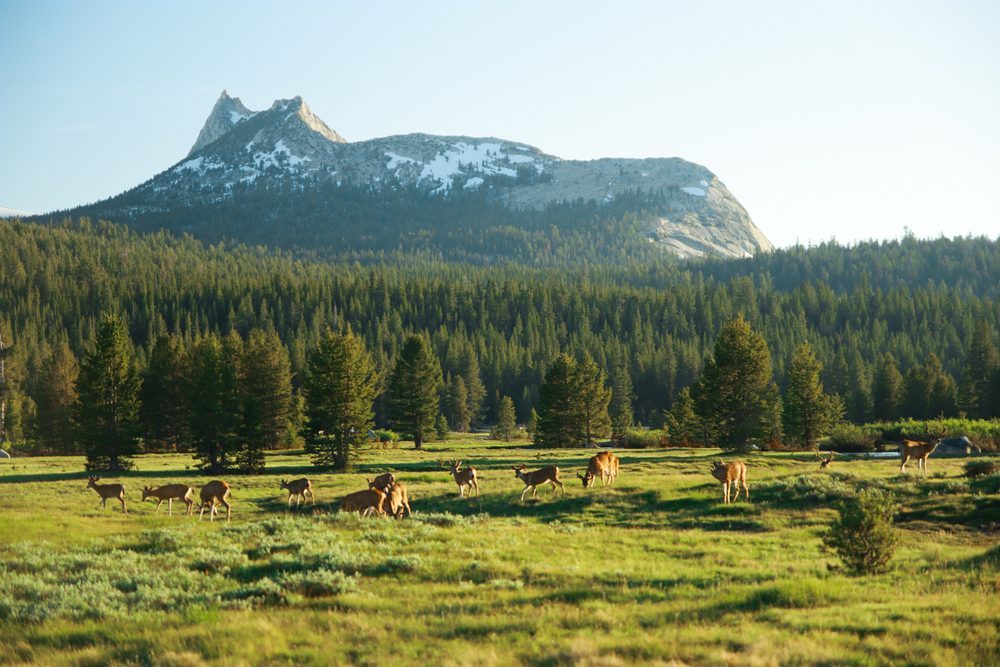
Though accessible by road, the 2.2-mile hiking trail from the valley floor to this famous overlook provides earned views of Half Dome, Yosemite Falls, and the High Country peaks bathed in alpenglow as the sun sets behind the Sierra Nevada range. The steep switchbacks gain over 3,000 feet of elevation, making this a serious workout that rewards hikers with perspectives unavailable to visitors who simply drive to the overlook.
Evening light on Half Dome’s granite face creates the phenomenon known as alpenglow, where the rock appears to glow from within long after the sun disappears behind western peaks.
Haleakala Summit Trail, Haleakala National Park
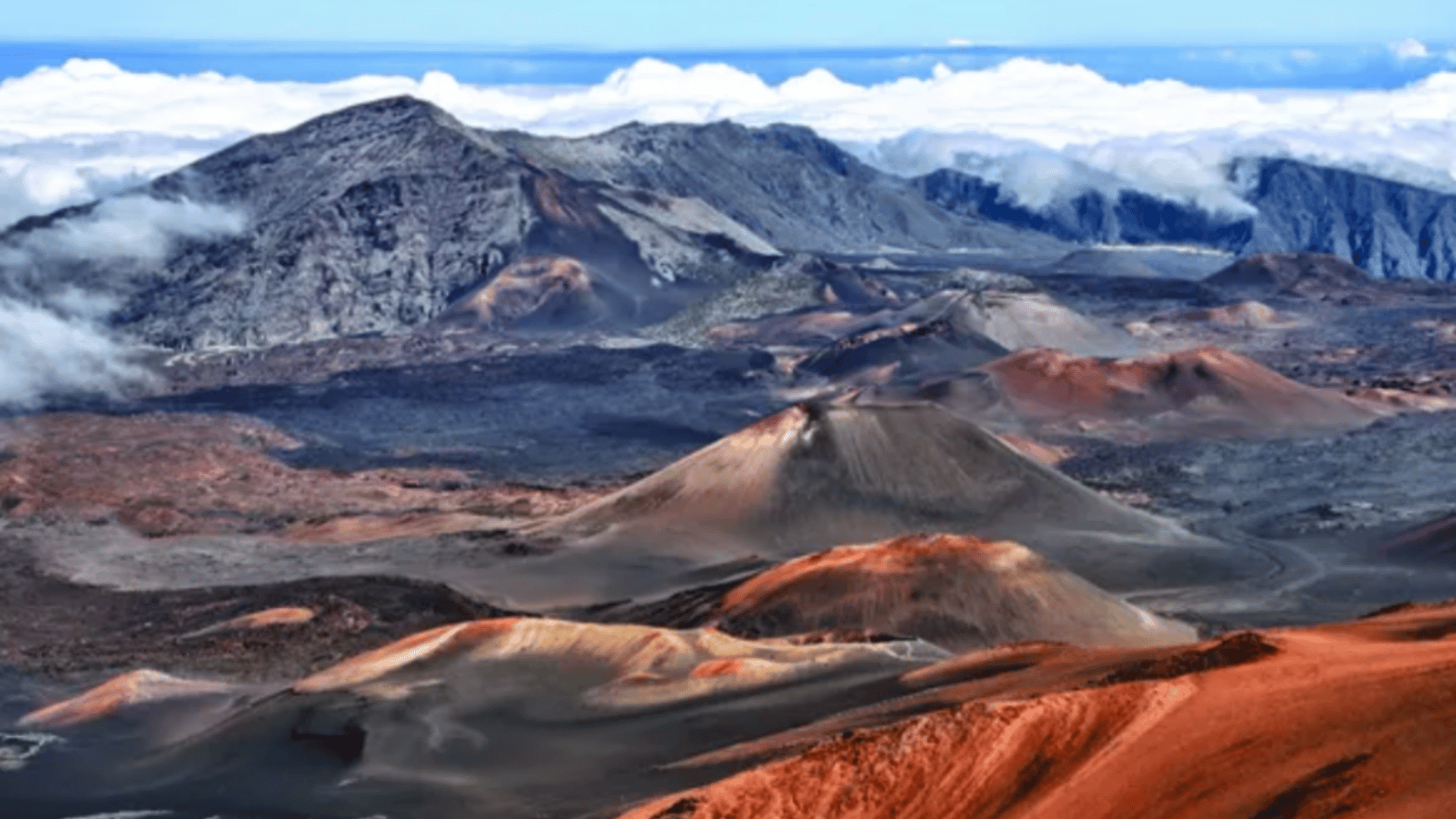
The 11-mile round-trip hike to Maui’s highest peak leads through lunar-like landscapes to a 10,023-foot summit where sunset occurs above the cloud layer, creating views that encompass multiple Hawaiian islands floating in the Pacific. The crater floor’s alien terrain features cinder cones, lava formations, and silversword plants that exist nowhere else on Earth, while the extreme elevation provides clear atmospheric conditions for spectacular sunset photography.
The temperature difference between the sea level and the summit can exceed 30 degrees, requiring warm clothing even in tropical Hawaii as evening temperatures drop rapidly after sunset.
Like Travel Pug’s content? Follow us on MSN.
Mesa Arch Trail, Canyonlands National Park

This easy 1.5-mile round-trip hike leads to a natural arch that frames views of distant mountains and canyons, where sunrise photography is famous, but sunset provides equally dramatic lighting from the opposite direction. The arch sits on the edge of a 500-foot cliff, creating dramatic framing opportunities for photographers while the red sandstone formation glows intensely in the evening light.
The trail’s accessibility attracts crowds during peak seasons, but sunset typically draws fewer visitors than the famous sunrise shots, providing opportunities for more solitude during the evening magic hour.
Hidden Lake Overlook Trail, Glacier National Park
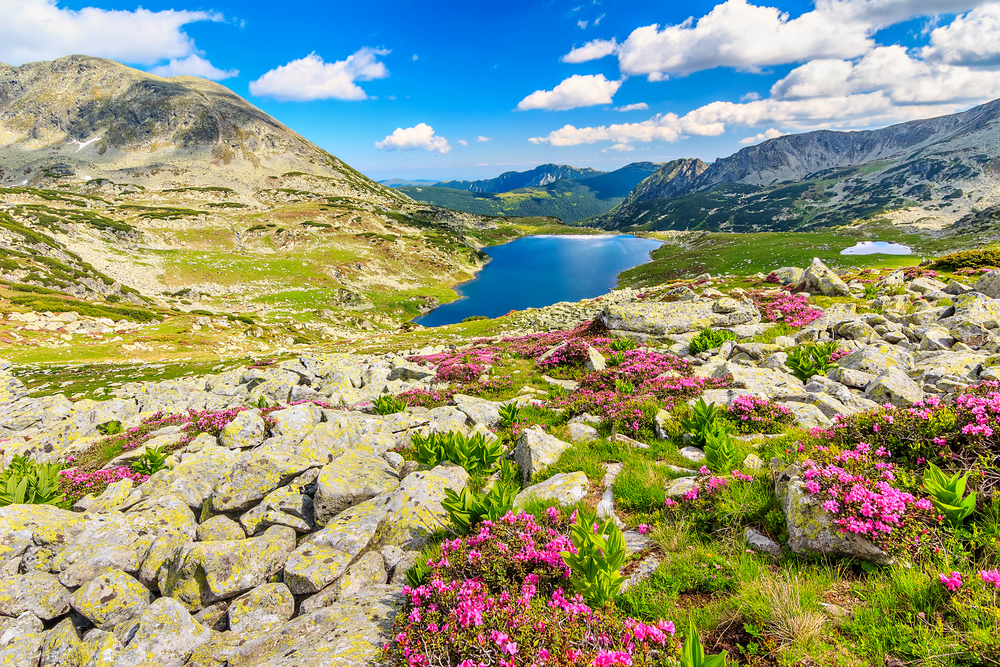
The 2.9-mile round-trip hike follows a boardwalk and stone path through alpine meadows to an overlook where Hidden Lake reflects surrounding peaks during calm evening conditions. Mountain goats frequently graze near the trail, while the elevated perspective reveals how glaciers carved the distinctive U-shaped valleys that define this landscape.
Evening light on the surrounding peaks creates alpenglow effects that can last for an hour after sunset, while the lake’s still surface doubles the visual impact by reflecting the mountain scenery in perfect mirror images.
Dante’s View Trail, Death Valley National Park

This short 1-mile round-trip hike leads to a viewpoint 5,475 feet above Badwater Basin, where sunset illuminates the lowest point in North America while mountain ranges create layered silhouettes extending to the horizon. The extreme elevation difference—over 5,700 feet from the overlook to the valley floor—creates perspectives that encompass multiple life zones from the desert floor to mountain peaks in a single view.
Evening temperatures at this elevation provide relief from Death Valley’s infamous heat, while clear desert air ensures visibility that can extend over 100 miles on clear days.
Like Travel Pug’s content? Follow us on MSN.
Hurricane Ridge Sunset Trail, Olympic National Park
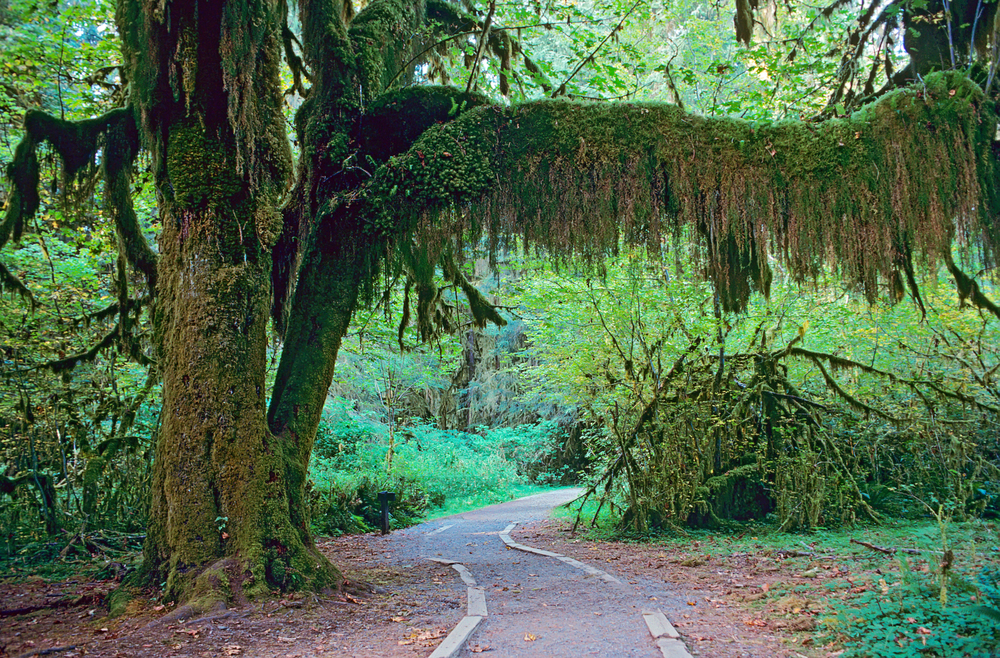
Multiple trail options from Hurricane Ridge provide sunset views across the Olympic Mountains, where evening light illuminates glaciated peaks while the Strait of Juan de Fuca and distant Vancouver Island create maritime backdrops. The 3-mile Hurricane Hill trail offers the most dramatic perspectives, climbing through subalpine meadows that burst with wildflowers during summer months.
Clear evening conditions reveal Mount Baker and the North Cascades across Puget Sound, creating views that encompass both Olympic wilderness and distant volcanic peaks in a single panoramic sweep.
Grandfather Mountain Trail, Great Smoky Mountains National Park
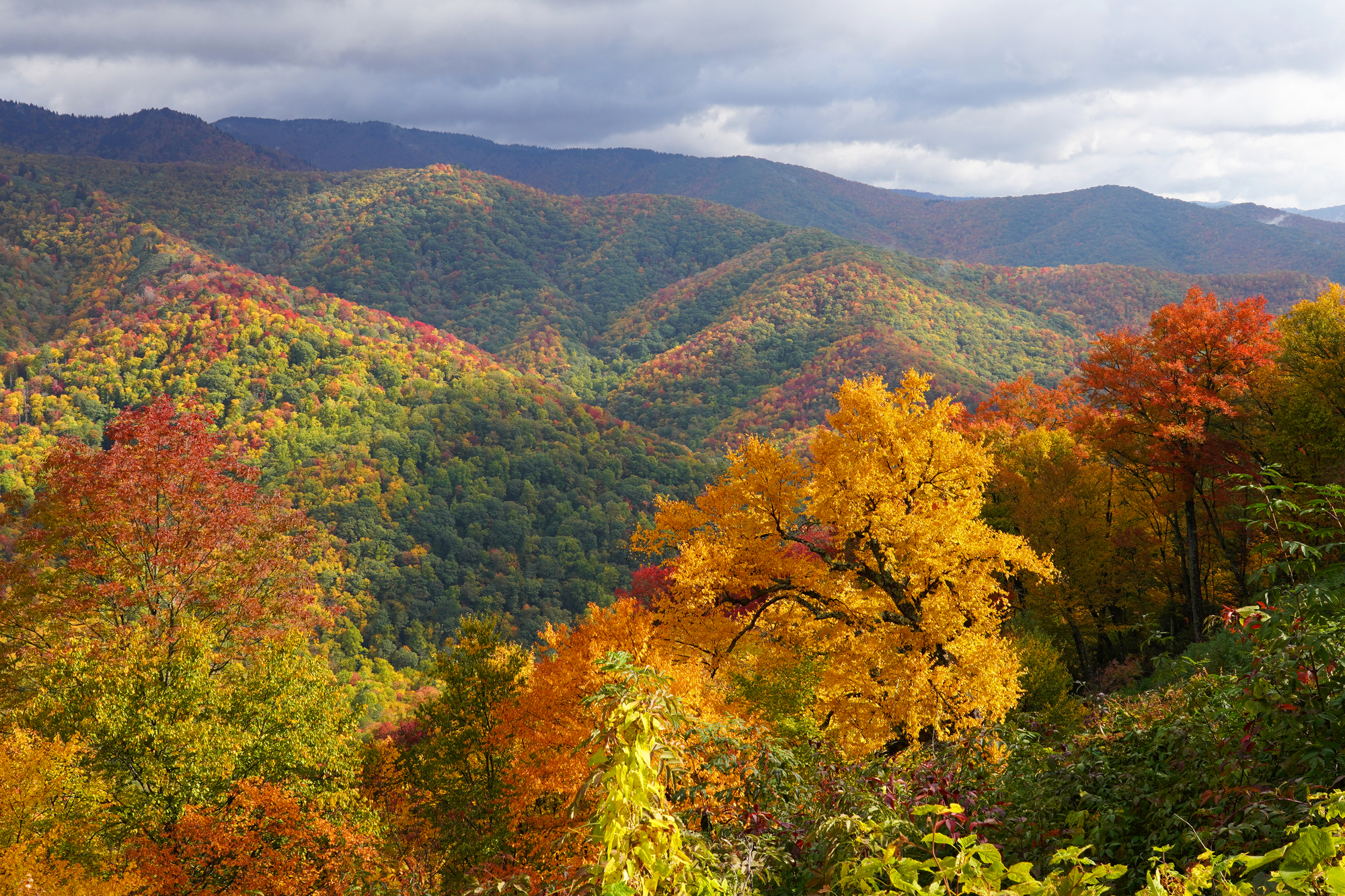
The challenging 4-mile round-trip hike to Charlie Bunion provides sunset views across wave after wave of forested ridges that create the classic Appalachian Mountain vista of layered blue silhouettes extending to the horizon. The rocky outcrop offers 360-degree views where evening light filters through atmospheric haze to create the blue tint that gives these mountains their ‘Smoky’ designation.
Wildlife viewing opportunities increase during evening hours as black bears and deer become more active, while the cooler temperatures of higher elevations provide relief from summer humidity in the valleys below.
Skyline Trail, Mount Rainier National Park

The 5.5-mile Skyline Loop from Paradise provides sunset views of Mount Rainier’s glaciated peak, while wildflower meadows create foreground color during summer months. The trail gains minimal elevation but crosses alpine terrain where weather can change rapidly, requiring preparation for mountain conditions even during seemingly perfect weather.
Evening light on Mount Rainier’s ice and snow creates alpenglow effects that can turn the entire mountain pink or orange, while views extend across the South Cascades to Mount Adams and Mount St. Helens on clear days.
Like Travel Pug’s content? Follow us on MSN.
Rim Trail, Grand Canyon National Park

This mostly flat 13-mile trail follows the South Rim, providing dozens of sunset viewing locations where the canyon’s layered geology creates one of America’s most famous natural spectacles as evening light penetrates the mile-deep chasm. Shorter sections, like the 2.2-mile stretch from Maricopa Point to Hermits Rest, offer accessible sunset viewing without committing to the full trail distance.
The canyon’s orientation ensures that sunset light illuminates the North Rim and eastern canyon walls, creating dramatic contrasts between shadowed foreground formations and brilliantly lit distant cliffs across the geological time machine spread out below.
Cathedral Lakes Trail, Yosemite National Park
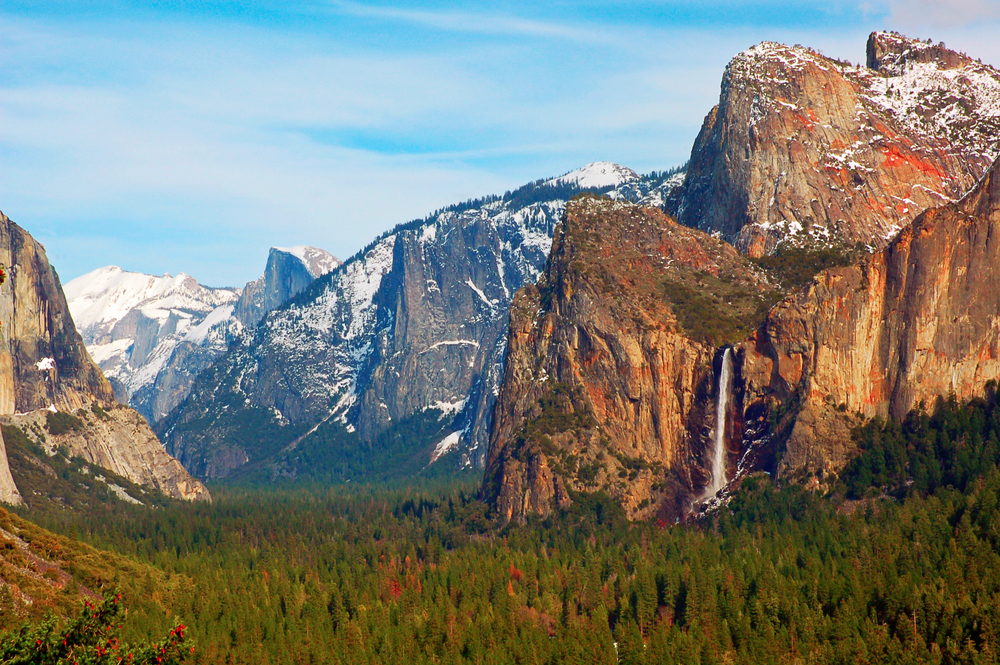
The 7-mile round-trip hike through Tuolumne Meadows leads to alpine lakes reflecting the distinctive granite domes of the High Country, where sunset creates mirror images of peaks like Cathedral Peak and surrounding spires. The trail crosses classic Sierra Nevada granite terrain punctuated by wildflower meadows and crystal-clear streams that create perfect foreground elements for sunset photography.
Evening light on the granite formations creates the warm glow that makes the Sierra Nevada sunsets legendary among mountain photographers, while the high elevation ensures clear atmospheric conditions.
Artist Point Trail, Mount Rainier National Park

This easy 1.2-mile round-trip hike leads to viewpoints where Mount Rainier dominates the northern horizon while the Tatoosh Range creates dramatic foreground elements during sunset conditions. The trail provides multiple perspectives on the mountain, allowing photographers to compose shots that include both the volcanic peak and the surrounding alpine wilderness.
Evening light conditions can create lenticular cloud formations around the mountain’s summit, while the area’s notorious weather patterns make sunset viewing a special treat that rewards visitors who time their arrival correctly.
Like Travel Pug’s content? Follow us on MSN.
Sunset Point Trail, Capitol Reef National Park

The short 1-mile round-trip hike leads to an overlook where the Waterpocket Fold’s colorful rock layers create a geological textbook opened across the Utah landscape, with evening light emphasizing the contrast between different sedimentary formations. The trail’s accessibility makes it suitable for families, while the elevated perspective reveals how water carved the distinctive canyons and mesas that define this landscape.
Sunset light transforms the red and white rock layers into glowing bands of color, while the desert’s clear air ensures that views extend across multiple geological formations to distant mountain ranges.
Bear Lake Trail, Rocky Mountain National Park

The easy 0.6-mile loop around Bear Lake provides sunset reflections of Longs Peak and surrounding 14,000-foot summits in the lake’s still waters, creating double exposure effects that capture both the peaks and their mirror images. The trail’s minimal elevation gain and paved surface accommodate visitors of all abilities, while the alpine setting at 9,475 feet elevation provides clear mountain air and dramatic temperature swings between day and evening conditions.
Elk and deer frequently visit the lake during evening hours, adding wildlife viewing opportunities to the sunset spectacle, while the short distance allows for leisurely photography sessions without time pressure.
When Day Surrenders to Night
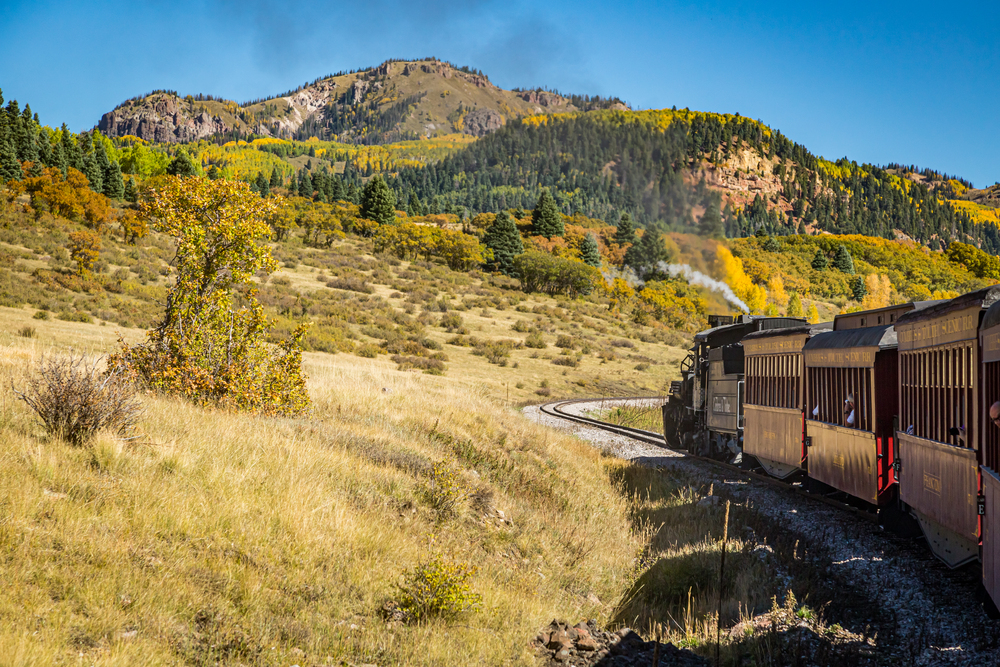
These sunset trails prove that the most memorable hiking experiences often occur during those magical transition hours when day surrenders to night and familiar landscapes reveal hidden beauty through nature’s daily light show. Each trail offers something unique—whether that’s the intimate scale of an alpine lake reflection or the epic scope of canyon vistas—but all share the essential element that transforms good hikes into unforgettable adventures: perfect timing.
The best sunset hikes don’t just provide exercise and fresh air; they create moments when the natural world performs its daily masterpiece, reminding us that some of life’s most spectacular experiences require nothing more than being in the right place when the light begins to fade, and the sky catches fire.
Like Travel Pug’s content? Follow us on MSN.
More from Travel Pug

- 20 Best Beach Towns in the Carolinas
- 13 Destinations Where Tourists Regularly Regret Their Trip
- 20 Destinations That Are More Magical Without an Itinerary
- 20 Underrated Adventures That Belong on Your Travel List
- 20 Cities Where You Should Just Wing It, No Planning Required
Like Travel Pug’s content? Follow us on MSN.
